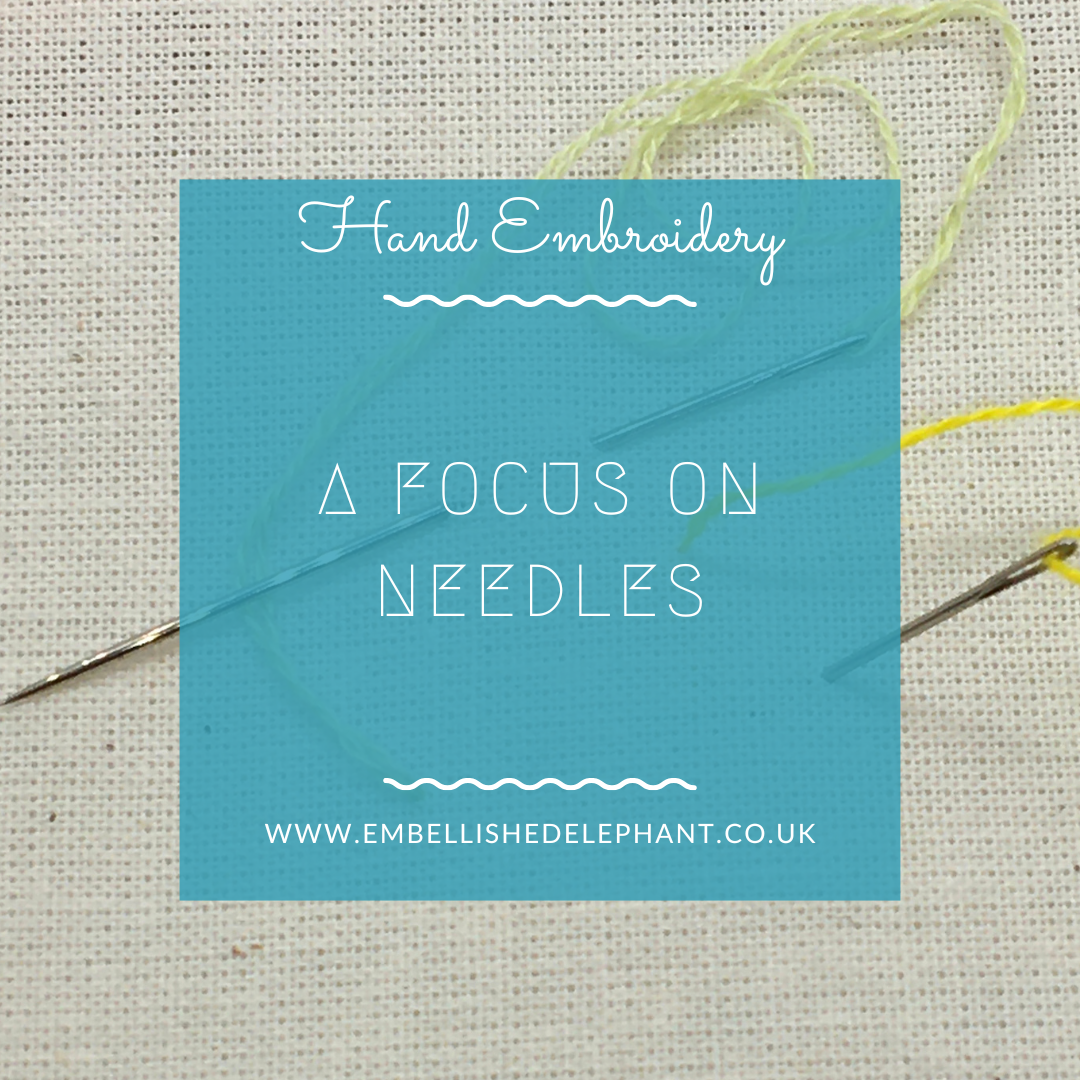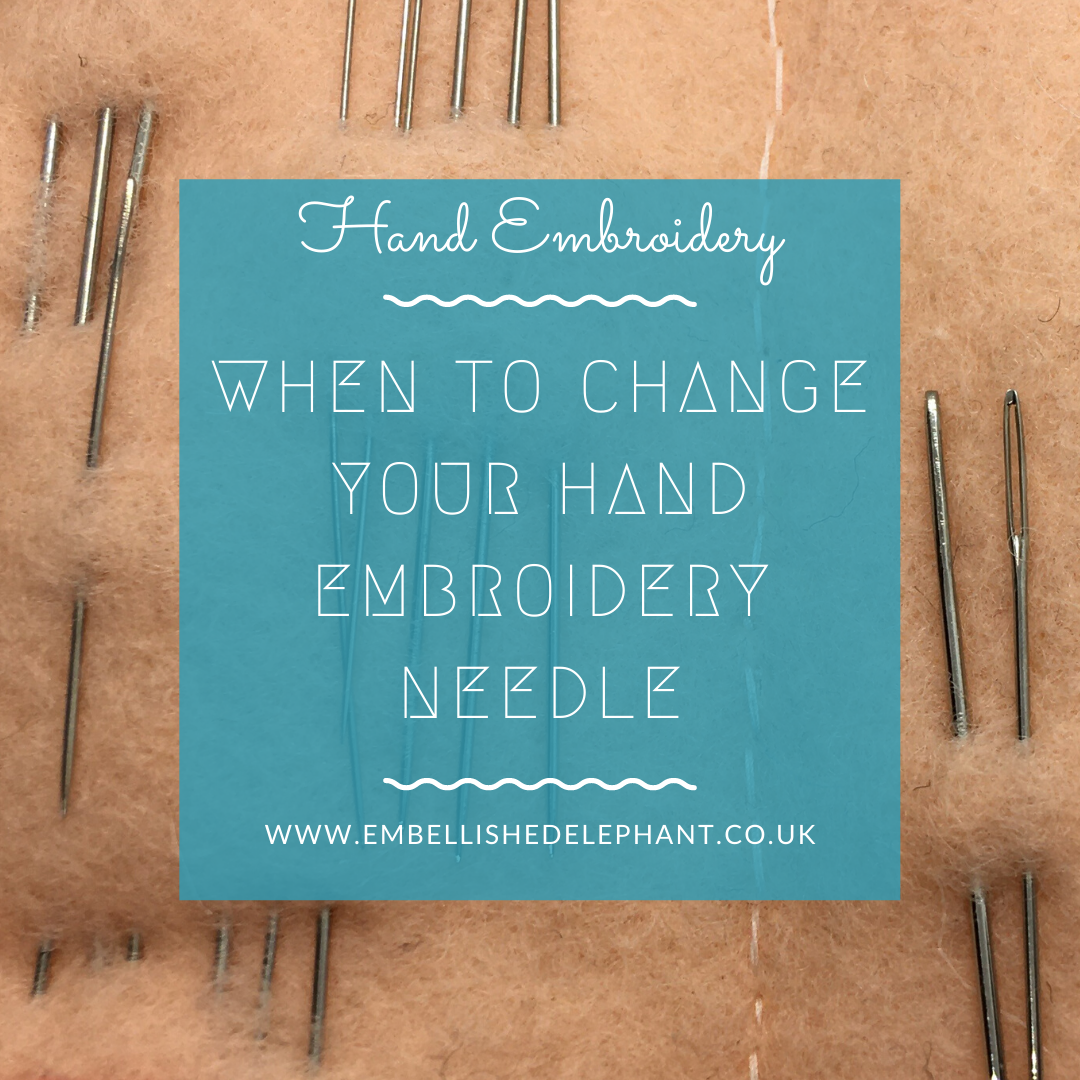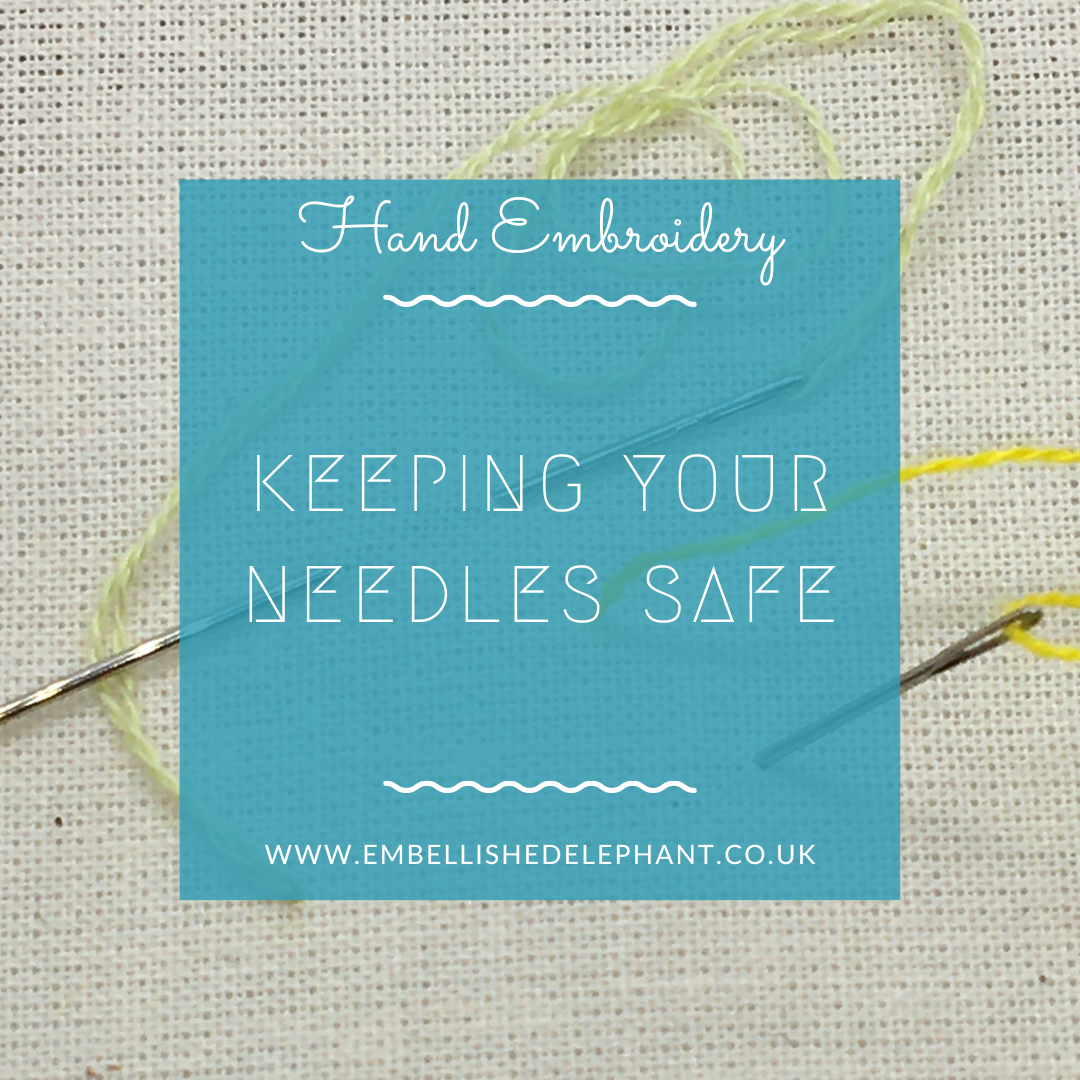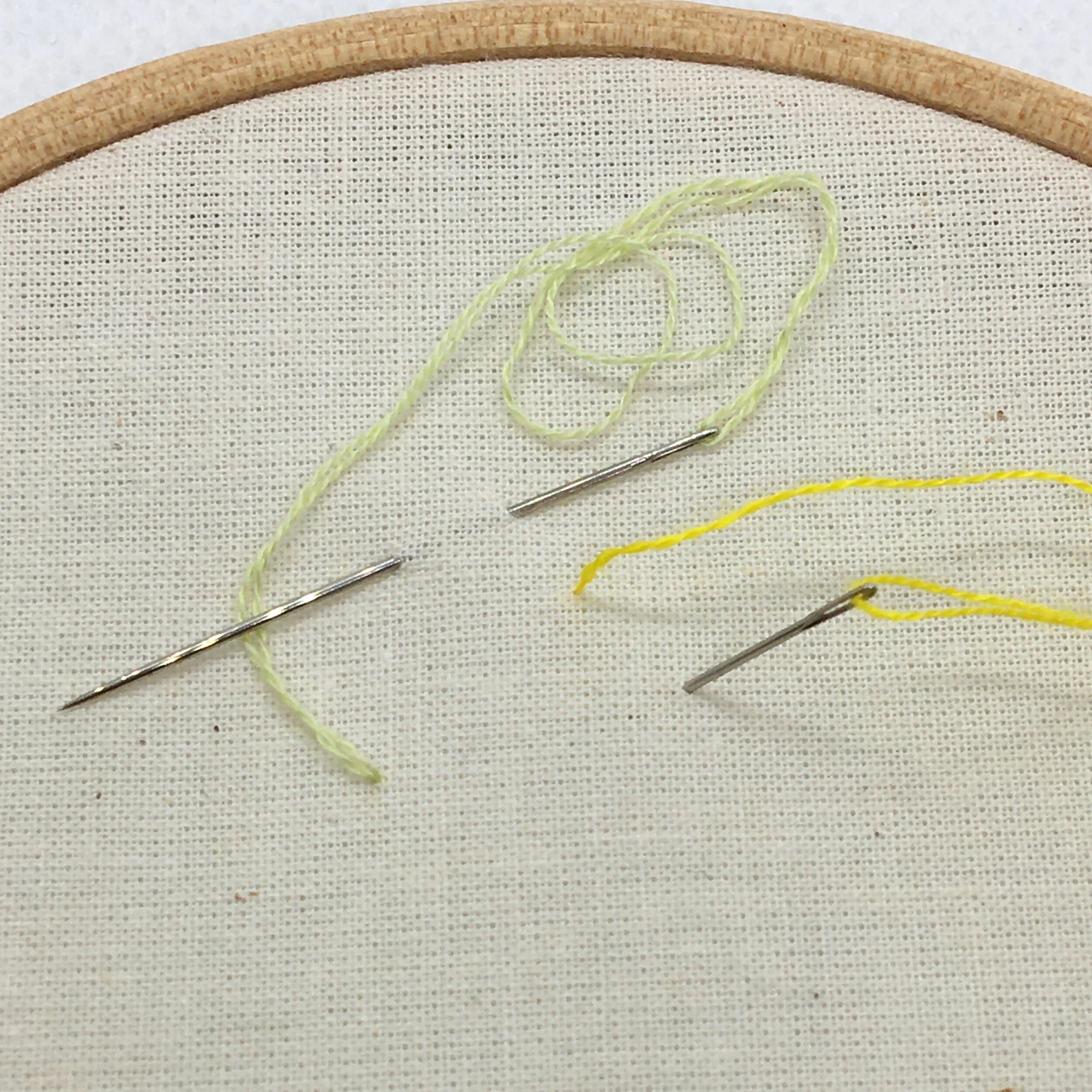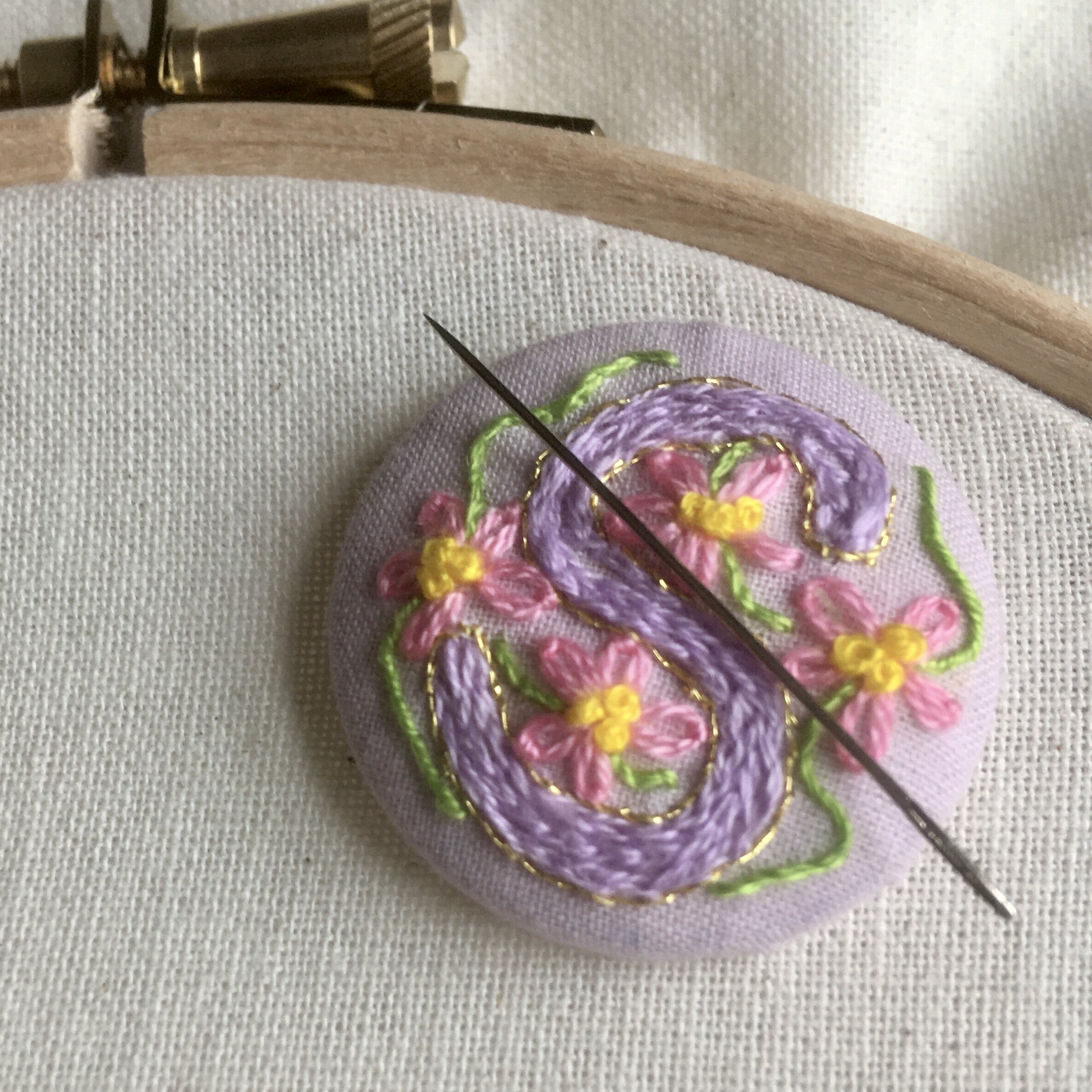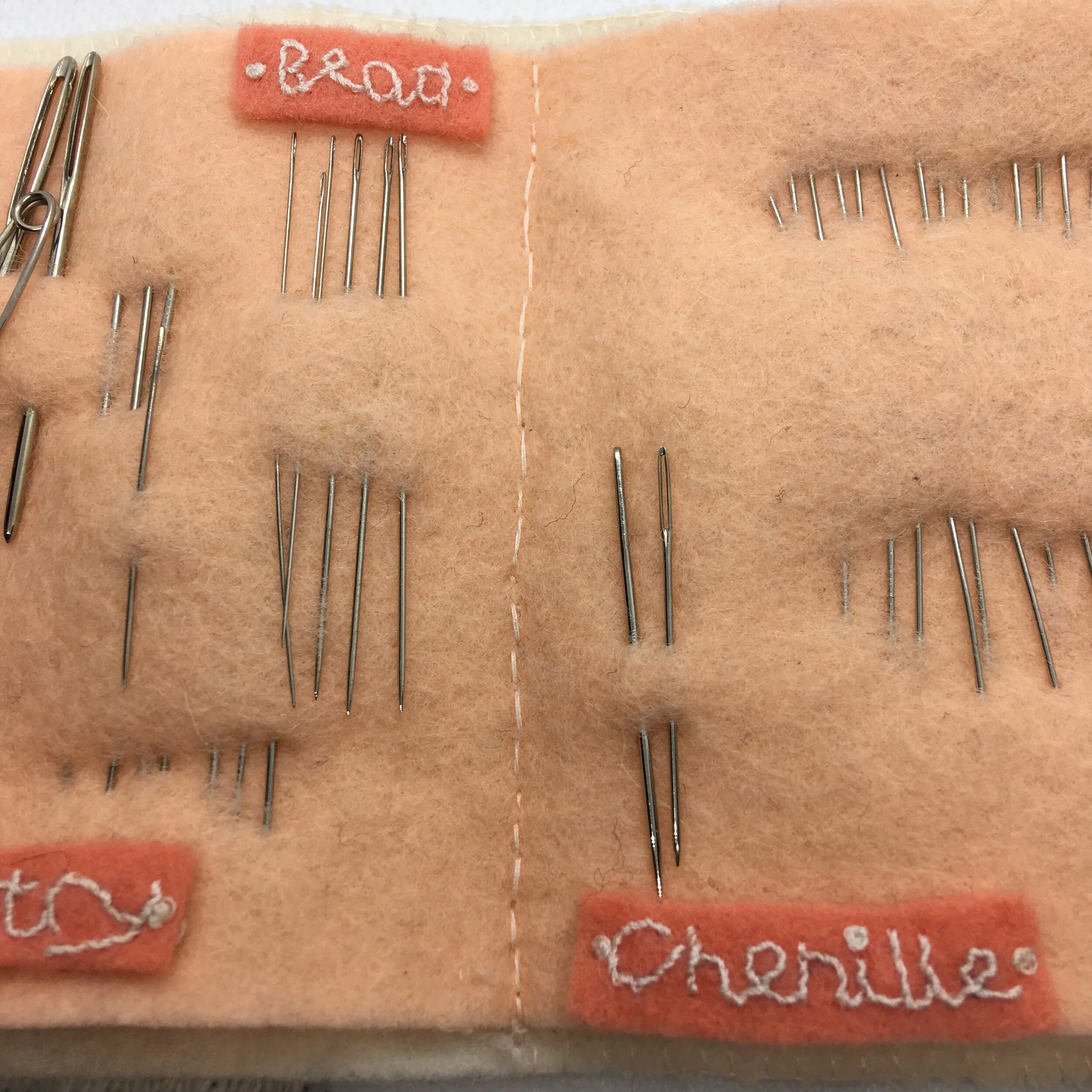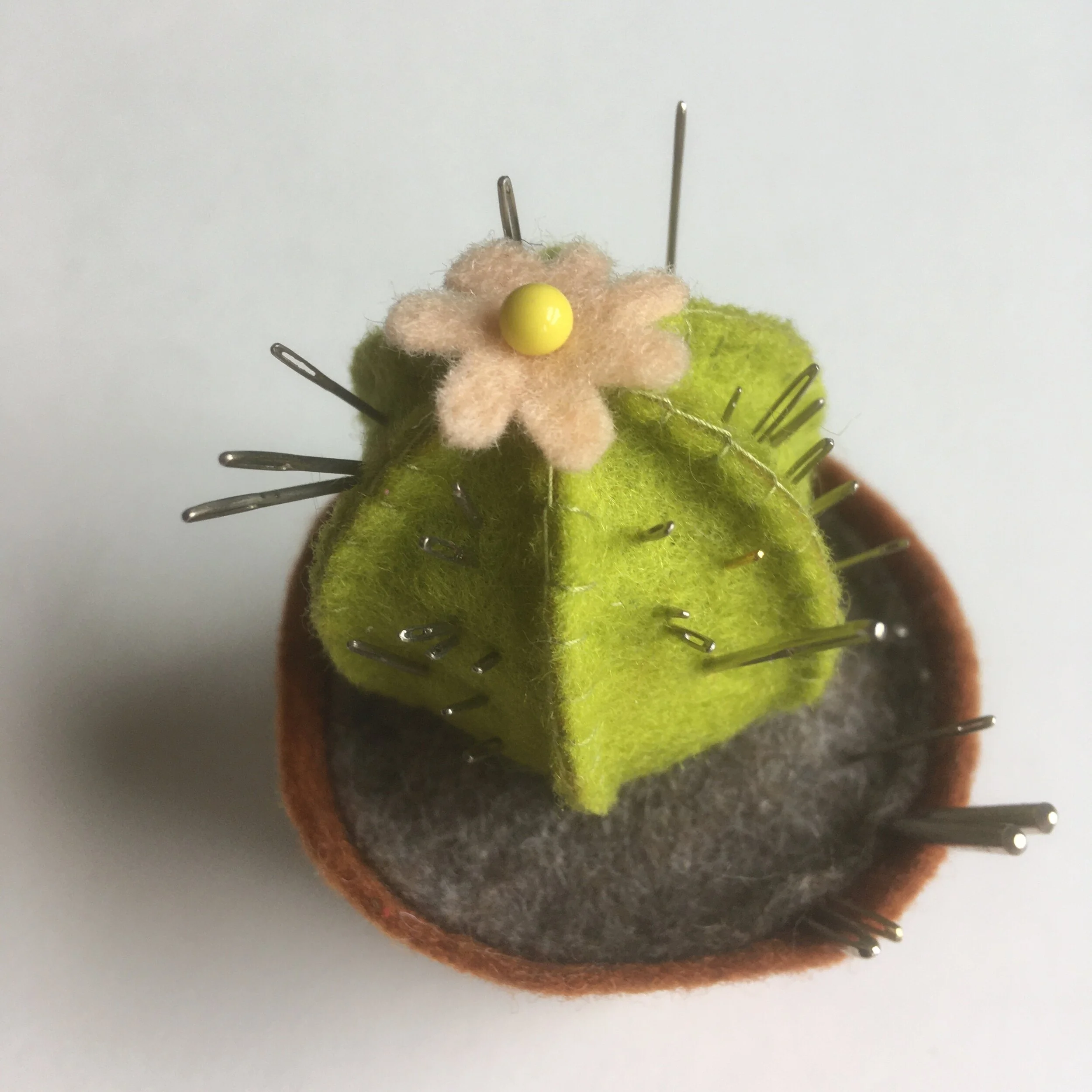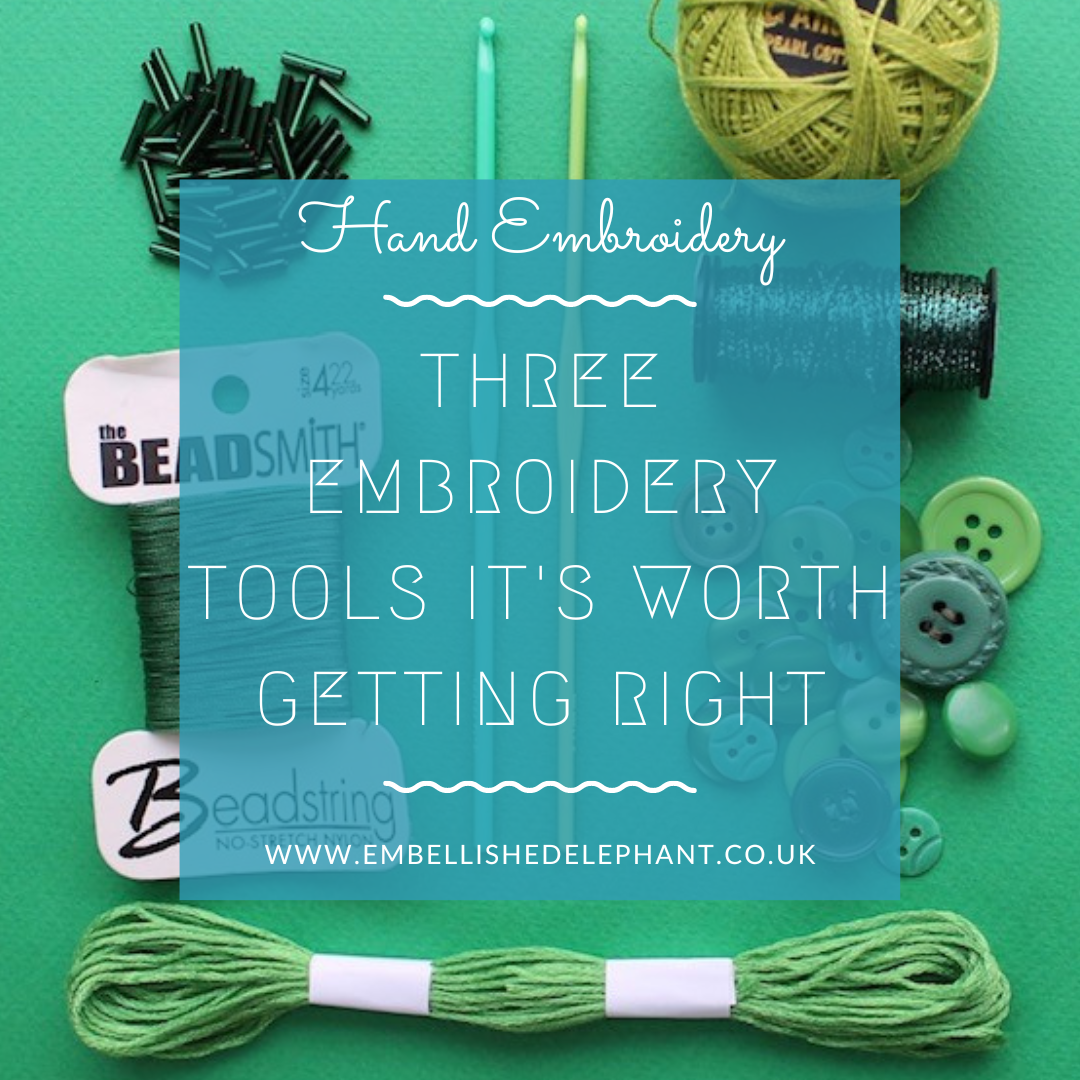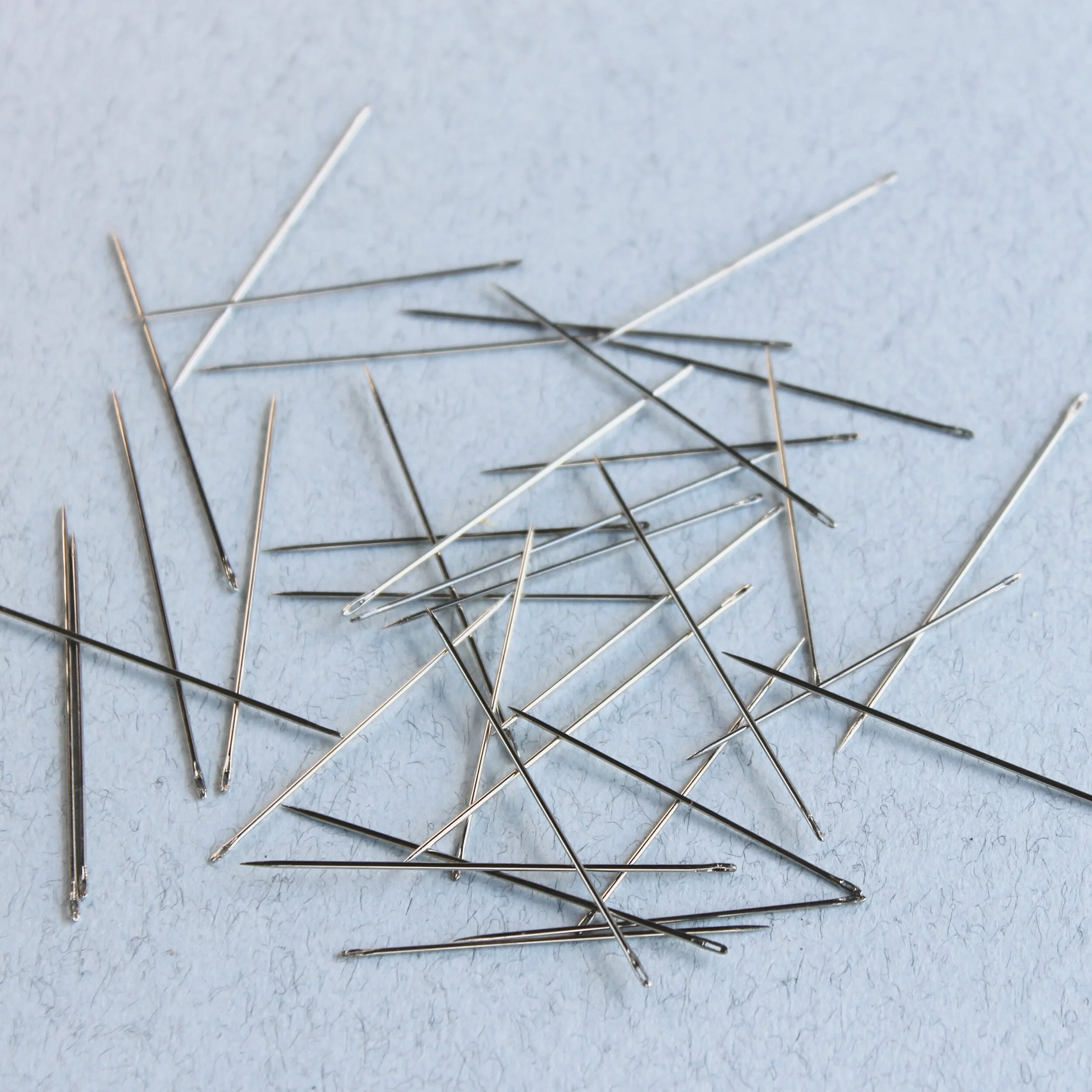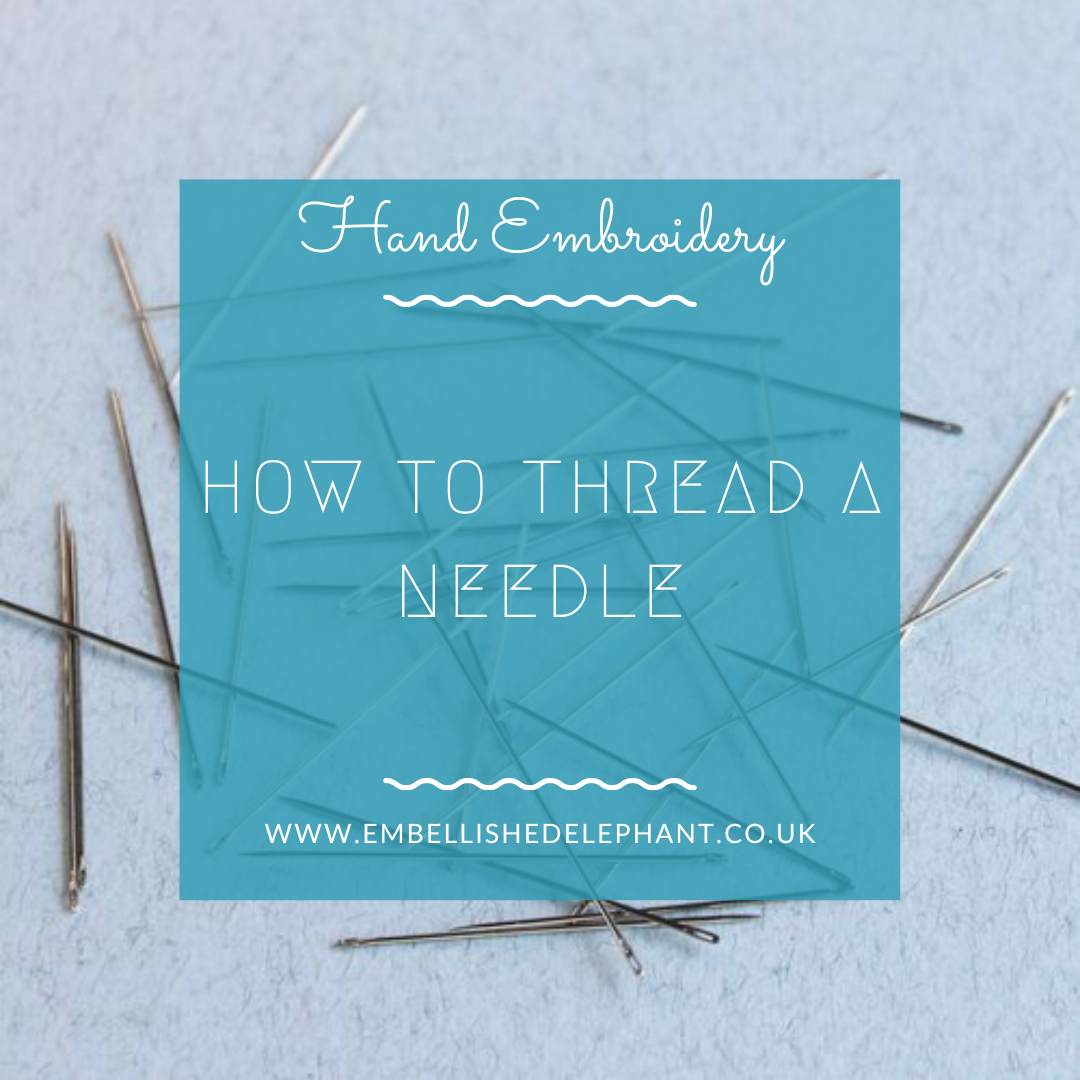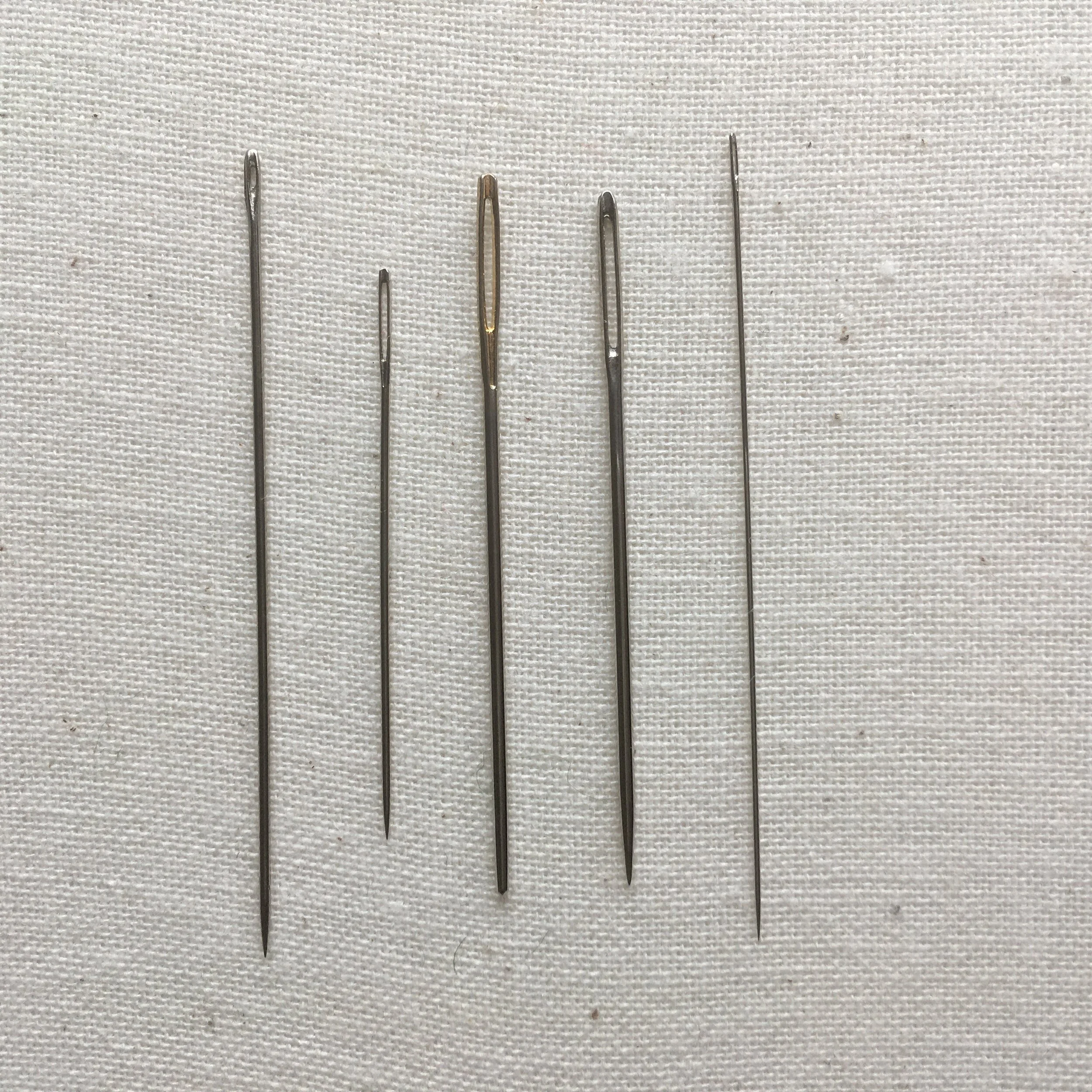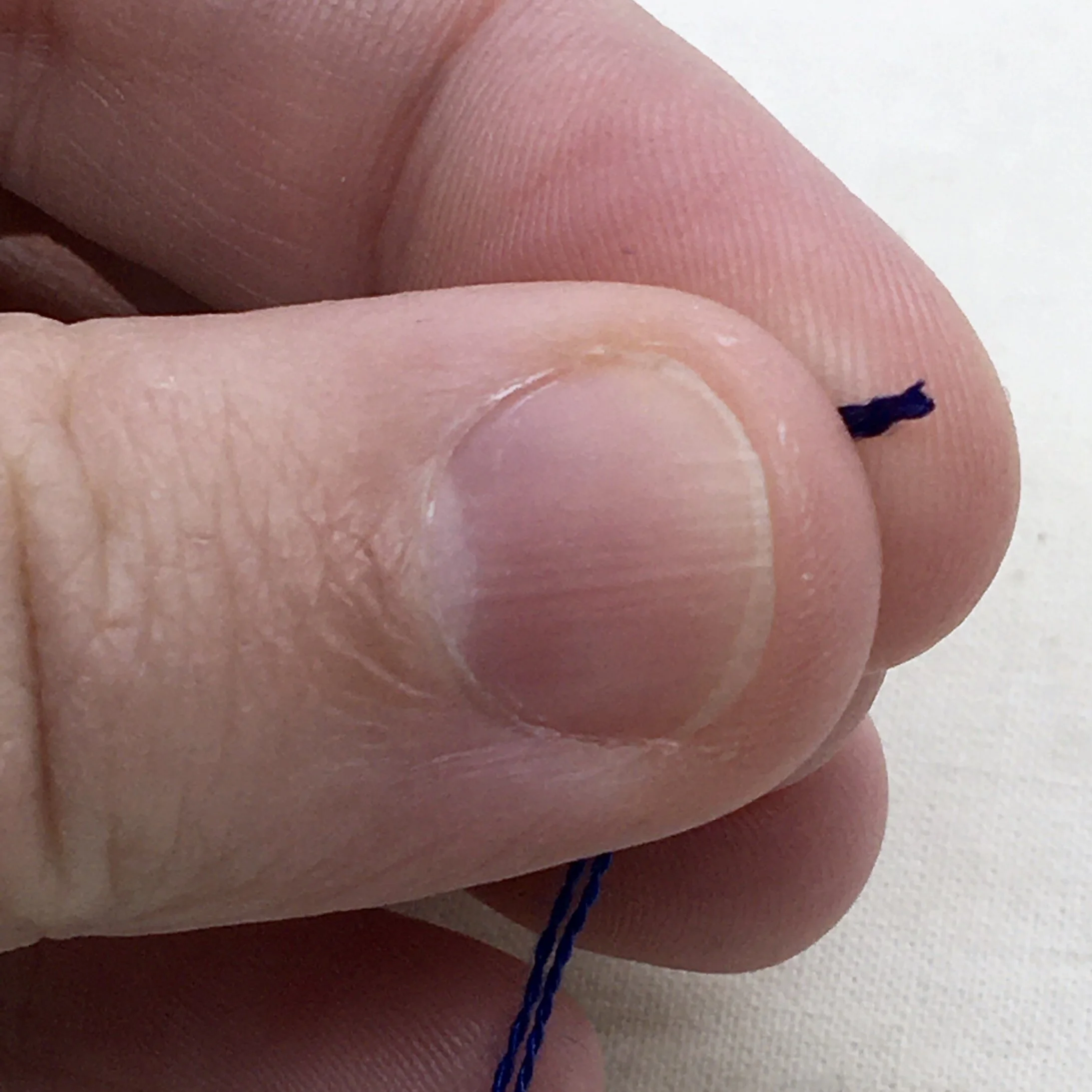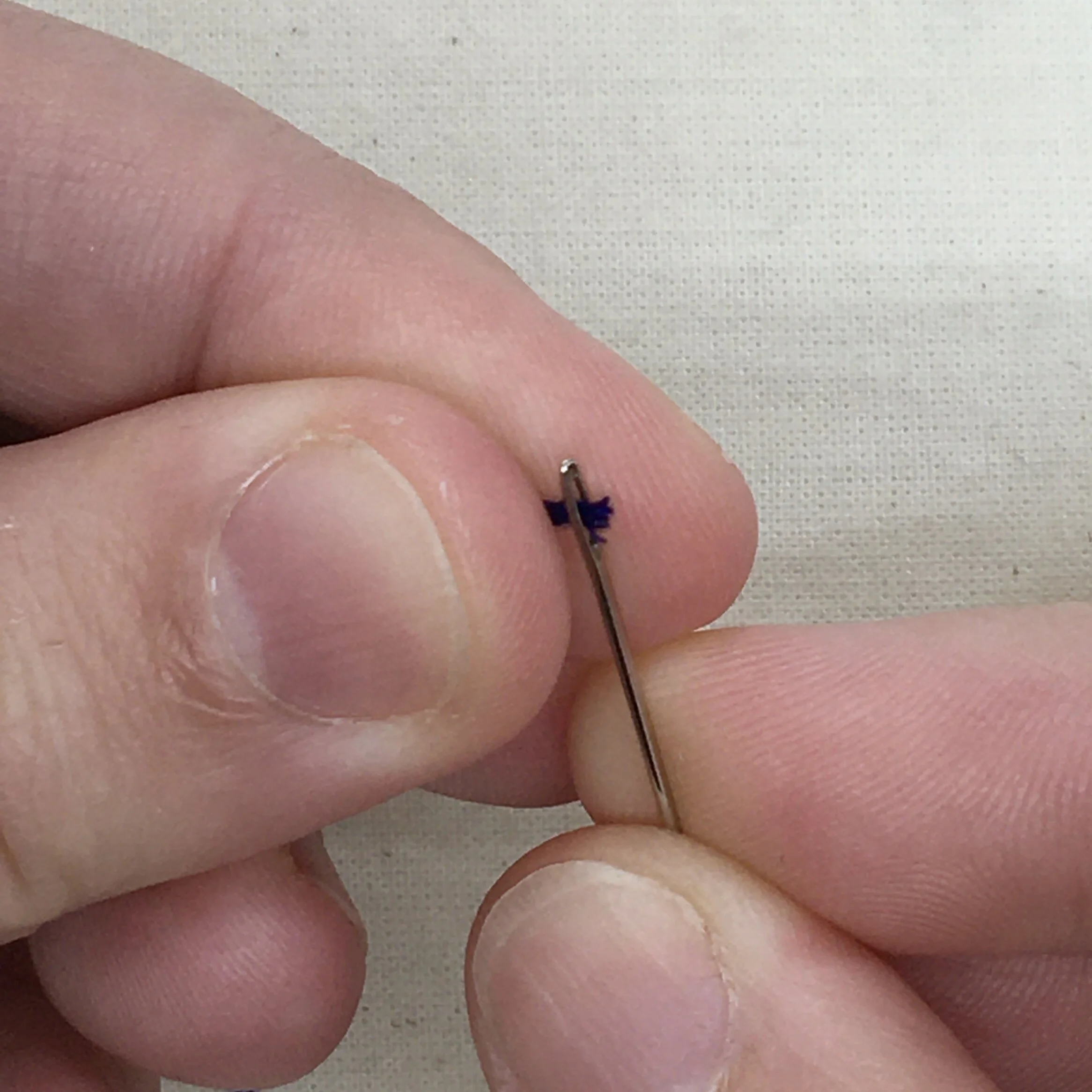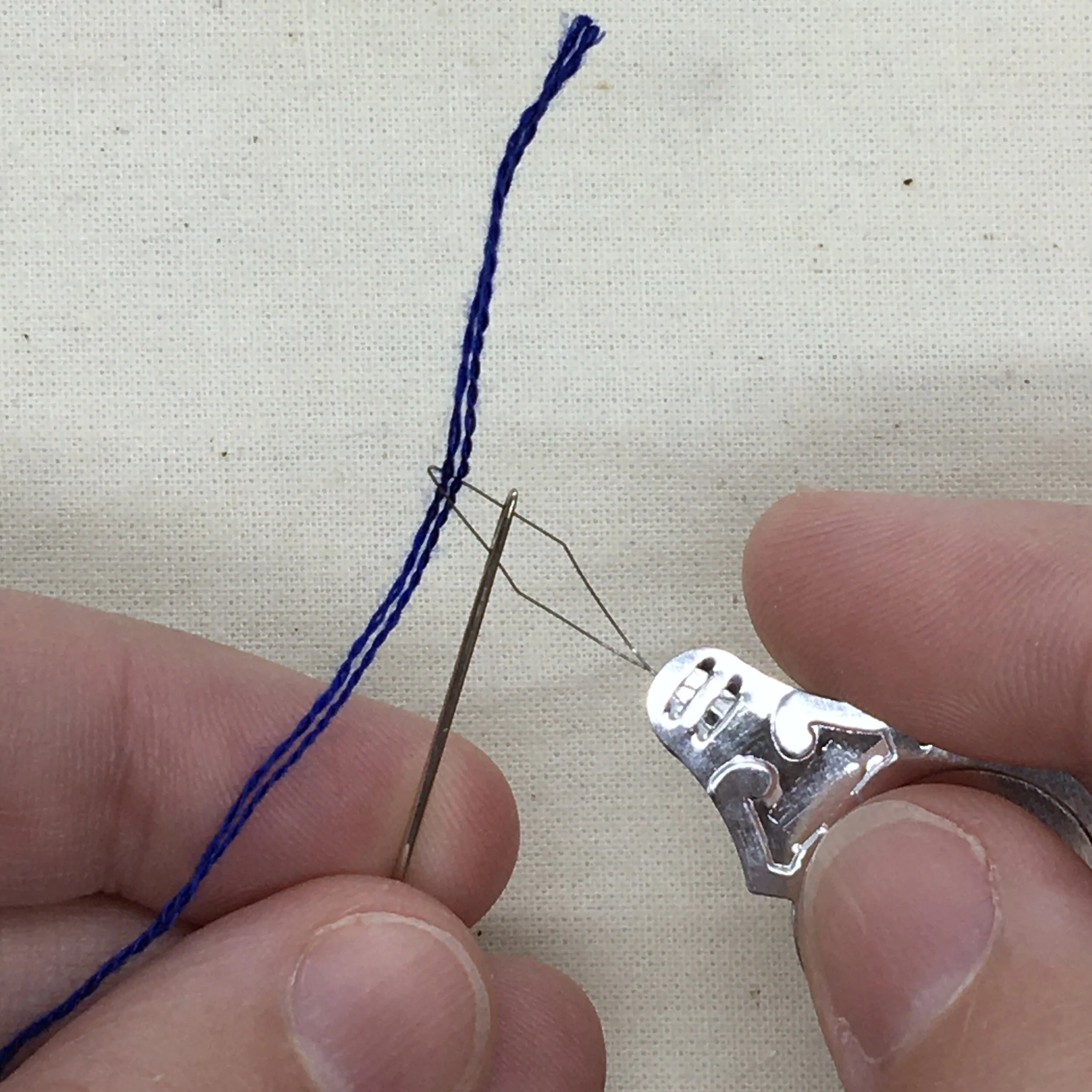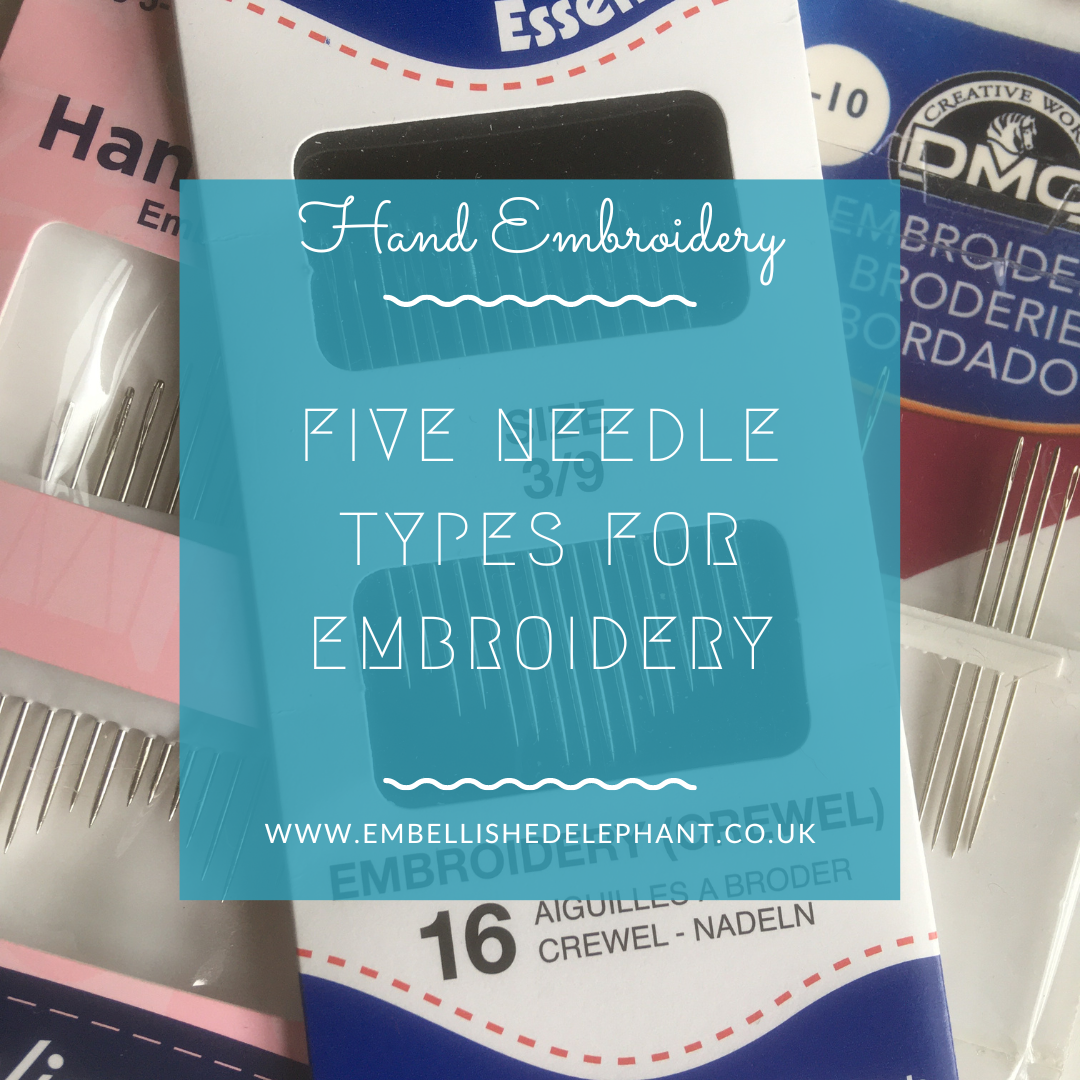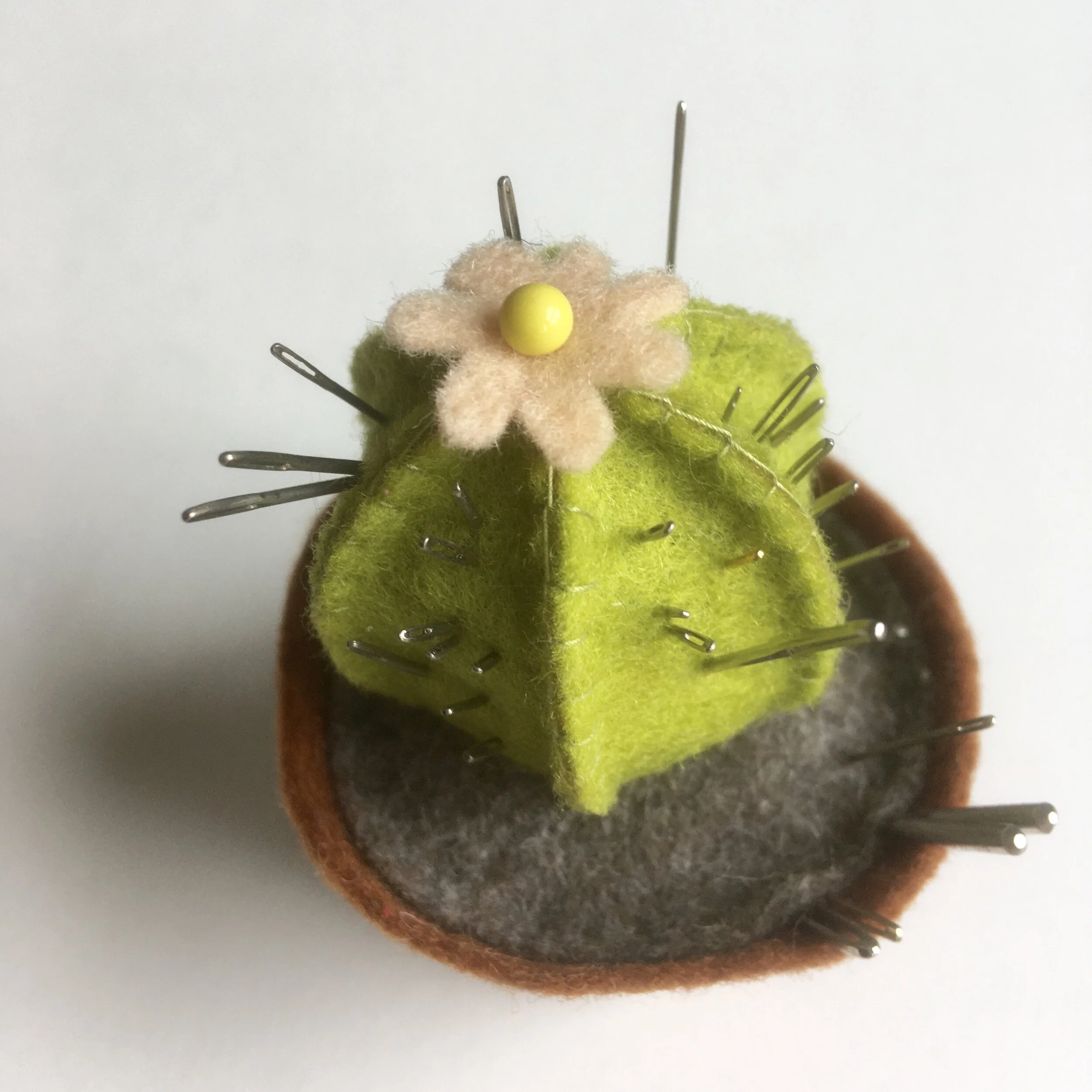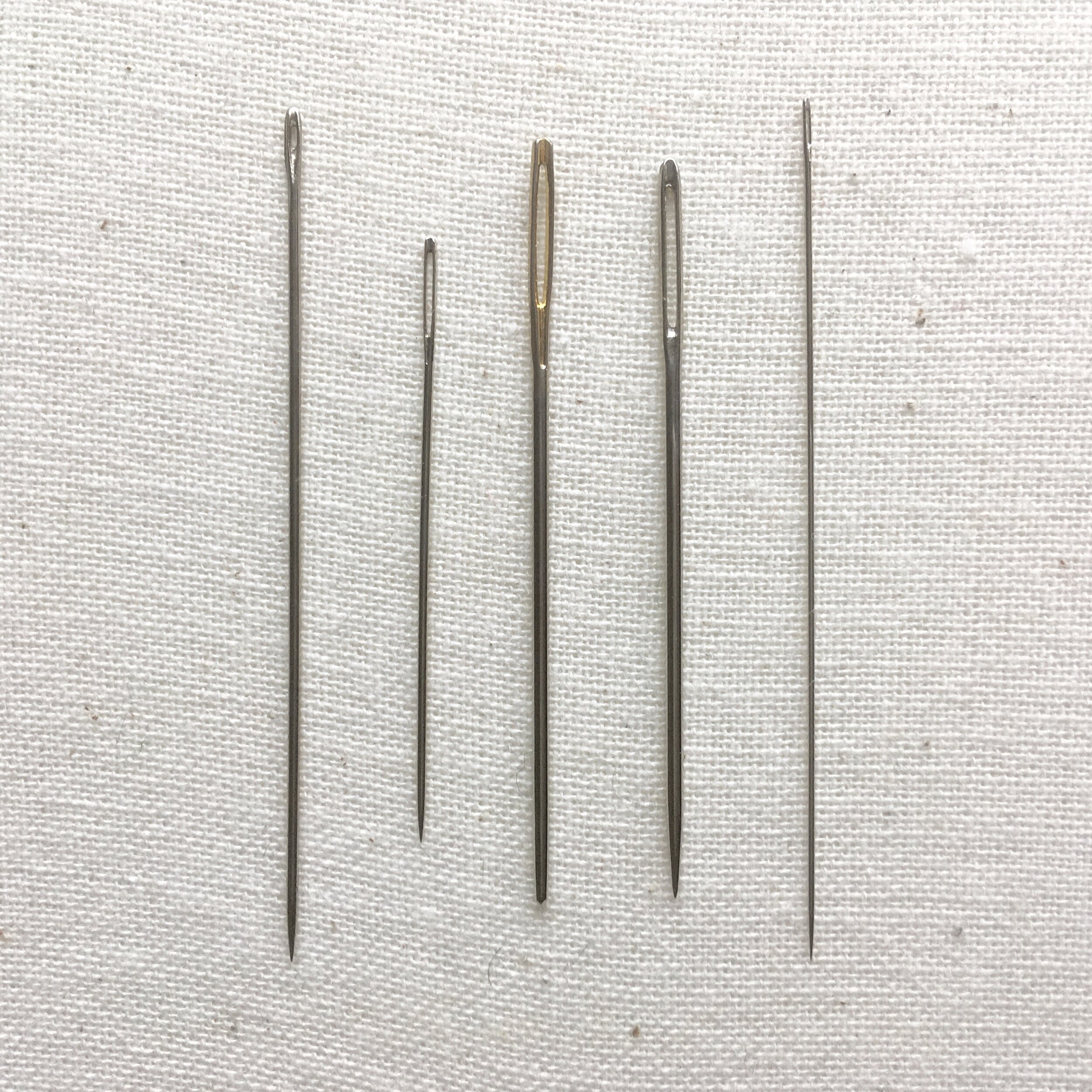I used to do a lot of beadwork and beading needles are very long and very thin. Over time the needle is stressed as it passes through the beads and all of a sudden when you give it a little tug it snaps and can be a bit of a shock.
I’ve found that hand embroidery needles snap less often as they are a little thicker so how do you know when to change them?
1 - It starts to bend
For me this is much more common that a snapped needle. I find that I often don’t notice how bent a needle has got until it’s laid on a flat surface like a table. You can keep stitching with a bent needle but it can be difficult to stitch with if you need to be very active.
2 - It is tarnished
The oils on your fingers can tarnish a needle over time. If the needle is plated then the metal plate may wear as the needle passes through the fabric. Take a look at your needles and see whether the centre of the needle is a slightly different colour or duller than the ends. You can try washing the needles to see if the colour goes back to normal, if that doesn’t work then it’s best to put it to one side.
3 - It is snagging
Over time the surface of the needle shaft may become roughed up and start snagging on the fabric. I also find that lower quality needles can have this problem from the start. Replace a needle as soon as you start of feel the snagging.
4 - It goes blunt
If you are finding that you are having to use more and more force to piece the fabric then the needle may be blunter than you need. Try switching to a new needle to determine if it was the needle or whether it was something else making it harder work like the bulk of stitches on the back of the work. Needles can be sharpened if they do go blunt.
Finally, what do you do with any needles you no longer have use for? If you need to dispose of them, don’t place them lose in the bin as they may escape and hurt someone. Weave them into a bit of fabric or cardboard or place them in a bag. Needles and pins are made from steel (hence why magnetic needle minders work) so they might be able to be recycled anywhere that also accepts things such as nails and bolts.
All my kits come with one needle that will get you through the project and plenty more future projects. But if you already have enough embroidery needles in your life, just drop me a message when you order and I can leave the needle out.
Enjoyed this blog post? I share embroidery tips and a free embroidery pattern in my monthly newsletter. Sign up here to receive the newsletter on the 1st of each the month.

